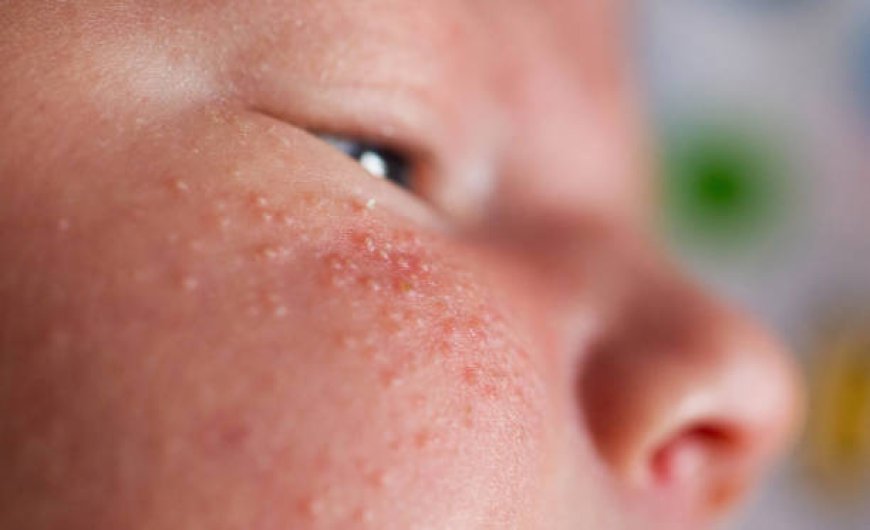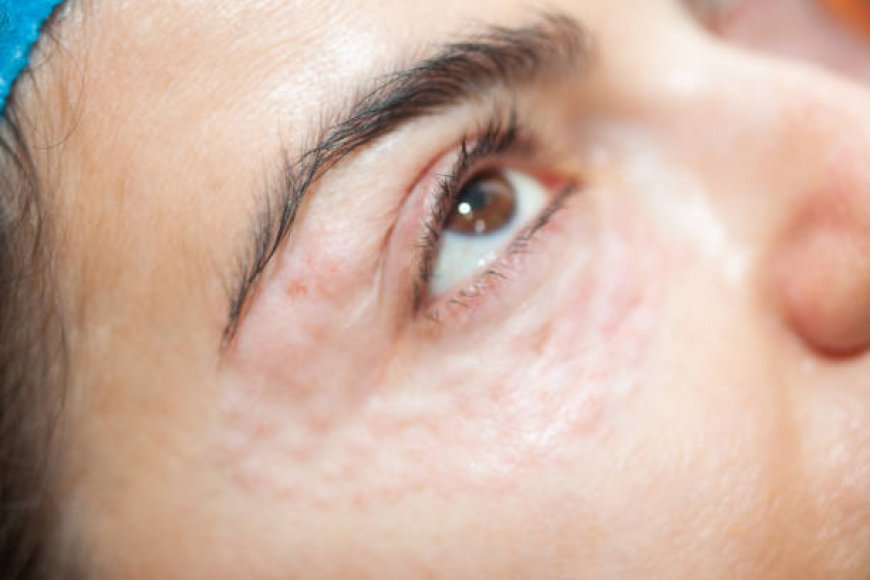Perfect Candidate: Understanding Milia Treatment in Riyadh
Tiny, keratin-filled cysts called milia frequently form when skin cells become stuck beneath the epidermis. Although they differ in a few ways, they are frequently confused for whiteheads. Recognizing the need for treatment requires an understanding of what milia are.

Milia are small, white cysts that commonly appear on the face, especially around the eyes, cheeks, and nose. These tiny bumps can be frustrating, as they often resemble whiteheads but don’t respond to typical acne treatments. If you're struggling with milia and looking for effective solutions, Milia Treatment in Riyadh might be just what you need. This blog explores the causes, treatment options, and tips for preventing milia, ensuring you have all the information you need to achieve clear, smooth skin.

What Are Milia?
Milia are tiny, keratin-filled cysts that can appear when skin cells accumulate and become trapped beneath the surface. While they can develop on anyone, they are particularly common in newborns, although they can occur at any age. Understanding milia is the first step toward effective treatment.
Types of Milia
- Primary Milia: These are typically found in newborns and are harmless. They usually clear up without treatment.
- Secondary Milia: These can develop due to skin damage, such as burns, blisters, or certain skin conditions.
Characteristics of Milia
- Appearance: Small, pearly-white or yellowish bumps on the skin.
- Location: Commonly found on the face, particularly around the eyes, but can also appear on the arms and torso.
- Size: Usually less than 2mm in diameter.
Causes of Milia
Understanding what causes milia can help you prevent them in the future. Several factors contribute to the formation of milia:
Skin Type
People with oily or thick skin are more prone to developing milia. When the skin's natural exfoliation process is impaired, dead skin cells can accumulate and lead to milia.
Sun Damage
Excessive sun exposure can damage the skin and contribute to the formation of milia. Protecting your skin from the sun is crucial for prevention.
Skin Products
Certain skincare products that are too heavy or greasy can clog pores and contribute to milia formation. It’s essential to choose non-comedogenic products that won’t exacerbate the issue.
Hormonal Changes
Hormonal fluctuations, such as those experienced during puberty or pregnancy, can also lead to the development of milia.
Recognizing Milia
Identifying milia is straightforward due to their distinct appearance. However, understanding how they differ from other skin conditions can prevent unnecessary worry.
Distinguishing Milia from Other Skin Bumps
- Whiteheads: Unlike whiteheads, milia do not have a central opening and cannot be popped.
- Sebaceous Cysts: These are usually larger and may have a visible opening, whereas milia are tiny and closed.
- Pearly Penile Papules: These are similar in appearance but typically occur on the penis and are entirely normal.
Treatment Options for Milia
If you’re considering Milia Treatment in Riyadh, there are several effective options available. It's essential to consult with a skincare professional to determine the best treatment for your specific needs.
Manual Extraction
One of the most common treatments for milia is manual extraction. This procedure involves using a sterile needle or a small incision to remove the cysts. It's typically performed by a skincare professional to minimize the risk of scarring or infection.
Chemical Peels
Chemical peels can help remove the outer layer of dead skin cells, which can prevent the formation of milia. They involve applying a chemical solution to the skin, which exfoliates and promotes new skin growth.
Microdermabrasion
This treatment involves using a device that sprays fine crystals onto the skin, exfoliating the surface and removing dead skin cells. Microdermabrasion can help reduce the appearance of milia and improve overall skin texture.
Topical Treatments
Certain topical treatments, such as retinoids, can help exfoliate the skin and prevent the formation of milia. These products promote cell turnover and can be effective in treating existing milia.
Laser Treatments
For stubborn milia that don’t respond to other treatments, laser therapy may be an option. This method uses focused light energy to target and destroy the cysts without damaging the surrounding skin.
Preventing Milia
Prevention is often easier than treatment, and there are several steps you can take to reduce your risk of developing milia.
Gentle Exfoliation
Incorporating gentle exfoliation into your skincare routine can help prevent the buildup of dead skin cells. Look for exfoliating cleansers or treatments containing alpha-hydroxy acids (AHAs) or beta-hydroxy acids (BHAs).
Choose Non-Comedogenic Products
Selecting skincare and makeup products labeled as non-comedogenic can help prevent clogged pores. This is especially important for individuals prone to milia.
Protect Your Skin from the Sun
Regularly applying sunscreen protects your skin from sun damage, which can contribute to milia formation. Choose a broad-spectrum sunscreen with at least SPF 30 and reapply throughout the day.
Maintain a Healthy Skincare Routine
Establishing a consistent skincare routine can help keep your skin healthy and free from milia. Cleanse your skin daily, moisturize appropriately, and avoid overly heavy products.
When to Seek Professional Help
If you notice a sudden increase in milia or if they cause discomfort or cosmetic concerns, it’s essential to seek professional advice. A skincare expert can provide personalized recommendations based on your skin type and condition.
Signs You Should Consult a Professional
- Persistent Milia: If milia do not improve with over-the-counter treatments or at-home remedies.
- Infection Signs: Redness, swelling, or pus around the milia may indicate infection.
- Cosmetic Concerns: If milia affect your confidence or self-esteem, professional treatment may be warranted.
Conclusion
In conclusion, if you're dealing with milia and considering Milia Treatment in Riyadh, it’s essential to understand your options and the factors contributing to their development. By recognizing the types and causes of milia, you can better approach treatment and prevention. Whether through manual extraction, chemical peels, or laser treatments, numerous solutions are available to help you achieve smoother, clearer skin.
Remember, maintaining a healthy skincare routine and choosing appropriate products can significantly reduce your risk of developing milia. If necessary, don’t hesitate to seek professional help to ensure you receive the best treatment for your skin. With the right approach, clear skin is within your reach!

 maria3211
maria3211